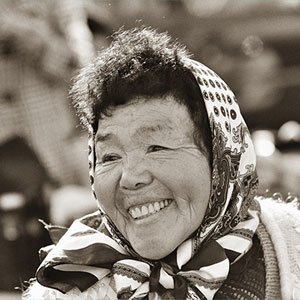1923
The Great Kanto Earthquake of 1923 struck when Japan was still recovering from unrest caused by World War I. With nowhere else to direct their anger, the panicked people persecuted over 6,000 "Malcontent Koreans" based on rumors that they were poisoning wells and setting fires (Ryang, 2003, p.732). In an assignment to draw "the scariest thing at the time of the earthquake," Matsuyama Tatsuo, a ten year-old boy, drew a scene of vigilantes "hunting Koreans" (Lee, 2013, p.166). The imagined violence of Koreans and the brutality of his own people had caused tremendous fear.
Although the government neglected the Korean Massacre in official education materials, some people have started to confront trauma by writing about their experiences. Citizen groups are also collecting testimonies to uncover the tragedy and commemorate the victims. Hopefully, these efforts will wake people from denial of trauma and become lessons for reflection and recovery after disasters.
1945
The Atomic Bombing of Hiroshima inflicted deep wounds on many and spurred an outcry. Ōe writes, "People in Hiroshima prefer to remain silent until death. They do not like to display their misery as 'data' in the movement against atomic bombs or in other political struggles" (1995, p.19). Nevertheless, many affected by the tragedy actively lobbied for peace.
After the war, a group of Bryn Mawr students raised money to help Hiroshima University rebuild its destroyed library. In 2012, Hiroshima University reciprocated with melted roof tiles from the 1945 Bombing as symbols of peace. Additionally, the Hiroshima Maidens project invited 25 disfigured Hiroshima women to the U.S. for reconstructive surgery. After the surgery, one said, "The scars on my face do not matter so much now, for the scar in my heart has healed" (NYFC, 1956, p.5). These events represent the two countries' bilateral efforts to learn from the past and create a peaceful future.
1995
The 1995 Kobe earthquake was one of Japan's worst disasters recorded. Thousands of lives were lost, and the city suffered severe destruction. The collapse of infrastructures believed to be indestructible sent tremendous shocks across the country. Experiencing the trauma of the earthquake together, Kobe and its people soon stood back up and recovered in solidarity. Many projects emerged to revive communities and spread hope. The "Let Flowers Bloom on Debris" project transformed landscapes of devastation into lively flower gardens on sites of destruction. Another example is Ban Shigeru's paper tube reconstruction of Takatori Catholic Church after its destruction. With the new structure, the church became a rescue base that provided services to all residents, including the non-Japanese, bringing together a close-knit community that overcame the disaster together. Both projects are symbols of community rebirth from the ashes of destruction.
2011
After the 3.11 triple disaster in Northeast region of Japan, experiences of disaster have been widely depicted in various media. These narratives embody multiple voices and represent varying interpretations of trauma and hope.
March Was Made of Yarn (2012), a compilation of short stories, reflects on various experiences of loss, remorse, and hope. In Shigematsu's "The Charm" the main character's guilt-induced depression leads her to her destroyed former hometown. Similarly, many stories reflect the helplessness and anguish felt by those beyond the disaster zone. In "Hiyoriyama," the daughter's entrance into high school becomes a symbol of new life in her family and hope for the future. In the documentary film No Man's Zone (2012), the elderly speak hopefully of their town's resilience and their ability to restore their lives and communities, while young people are doubtful of the area's future, choosing to move to major cities to begin new lives. Individuals are finding their own ways to cope with trauma and move on to a brighter future.
